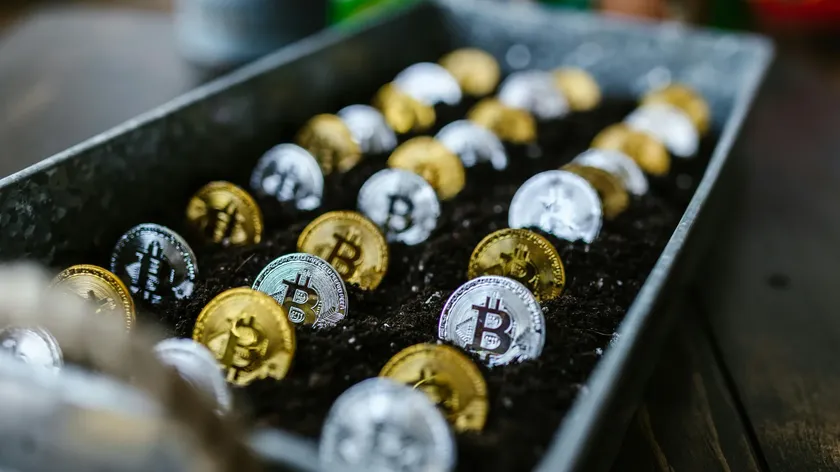Technology
Bitcoin Supply Squeeze: Expert Analysis on Exchange Outflows Crisis
Singapore's leading blockchain analyst Dr. Sarah Chen discusses the implications of massive Bitcoin outflows from exchanges, highlighting potential market impacts and investment strategies. With exchange reserves at seven-year lows, this exclusive interview explores what this means for both institutional and retail investors in Asia's premier crypto hub.
ParWei-Ling Tan
Publié le
#bitcoin#cryptocurrency#exchange outflows#market analysis#singapore fintech#crypto investment

Bitcoin exchange reserves hit seven-year low as institutional investors move to cold storage
In an exclusive interview with blockchain analyst Dr. Sarah Chen from the Singapore Fintech Association, we explore the implications of recent massive Bitcoin outflows from exchanges and what it means for Singapore's growing crypto ecosystem.
Q: Recent data shows significant Bitcoin moving off exchanges. Can you explain what's happening?
A: Indeed, we're seeing a remarkable trend. According to recent data, approximately 114,000 bitcoins – valued at over US$14 billion – have been withdrawn from cryptocurrency exchanges in just two weeks. This has pushed exchange reserves to their lowest levels in seven years, with total holdings now between 2.45 to 2.83 million bitcoins, depending on the data source.
What we're witnessing is a mass exodus of Bitcoin from centralized exchanges to cold storage wallets. This fundamentally reduces the immediately available supply for trading on these platforms.
Q: What's driving this significant movement of assets?
A: Several factors are at play, lah. First, we're seeing a strong 'hodling' mentality, especially among institutional investors. Many are adopting long-term storage strategies, preferring to maintain direct custody of their assets rather than leaving them on exchanges.
Secondly, there's growing concern about regulatory uncertainty and platform stability. The ghost of FTX still haunts many investors, particularly here in Asia where we saw significant exposure to that collapse.
Thirdly, Bitcoin's price performance has been stellar, recently surpassing US$125,000. This has attracted institutional attention, especially with the introduction of spot Bitcoin ETFs on Wall Street. The Monetary Authority of Singapore's measured approach to crypto regulation has also helped build confidence in the sector.
Q: How does this 'supply squeeze' impact the market?
A: It's important to understand that we're not facing a true scarcity – Bitcoin isn't disappearing. Rather, we're seeing reduced liquidity on exchanges, which could lead to interesting market dynamics.
From a Singapore perspective, this could present both challenges and opportunities. Our position as Asia's leading crypto hub means we're particularly attuned to these market shifts. Local exchanges might need to adjust their liquidity management strategies, while institutional investors may need to refine their entry strategies.
Q: What are the risks we should consider?
A: First, we must acknowledge data interpretation challenges. Different sources show varying reserve levels – some report 2.83 million bitcoins, others 2.45 million. This discrepancy reflects the complexity of blockchain analytics.
Secondly, while this withdrawal pattern is significant, it's not unprecedented. We've observed similar behaviors in previous market cycles, though perhaps not at this scale.
Thirdly, don't assume this automatically means prices will skyrocket. Many external factors, from macroeconomic conditions to regulatory developments, particularly in key markets like Singapore, can influence price action.
Q: What should new investors consider in this environment?
A: For those looking to enter the market now, especially in Singapore's sophisticated crypto ecosystem, several considerations are crucial:
1. Liquidity challenges: Large-volume purchases may face execution difficulties on traditional exchanges.
2. Price impact: Reduced liquidity could lead to higher slippage and trading costs.
3. Strategy alignment: The current market structure favors long-term holding over short-term trading.
I'd recommend new investors to carefully consider their entry strategy and perhaps look at dollar-cost averaging rather than large single entries.
Q: How might this trend evolve?
A: Looking ahead, I expect this trend to continue, especially as institutional adoption grows. Singapore's role as a crypto hub positions us uniquely to observe and benefit from these market dynamics.
The introduction of clearer regulatory frameworks, like Singapore's Payment Services Act and the new Genius Act mentioned in recent discussions, could further accelerate institutional participation.
However, we should expect some cyclical behavior. Markets tend to find equilibrium, and we might see periods where coins flow back to exchanges as profit-taking occurs.
Q: Any final thoughts for our readers?
A: This 'supply squeeze' represents a maturing market where participants increasingly prioritize security and long-term value over short-term trading opportunities. For Singapore's crypto ecosystem, it's another indicator of the market's evolution toward institutional-grade infrastructure and practices.
Investors should stay informed but avoid panic decisions. Whether you're a retail investor in Toa Payoh or an institution in Marina Bay, understanding these market dynamics is crucial for making informed investment decisions.
Remember: in crypto, as in traditional finance, patience and proper risk management are key to long-term success.
Wei-Ling Tan
Tech and economy specialist, covering innovation in Southeast Asia from Singapore for both English-language and regional media outlets.
